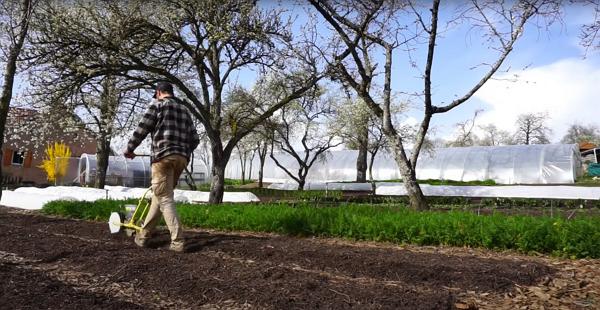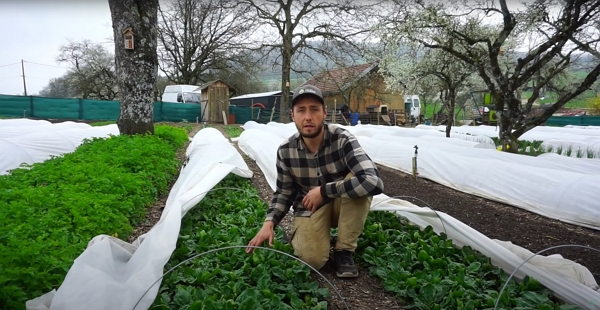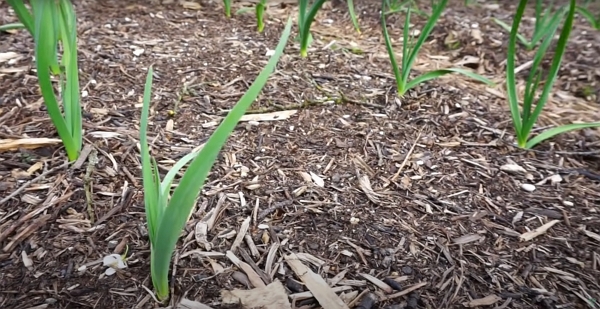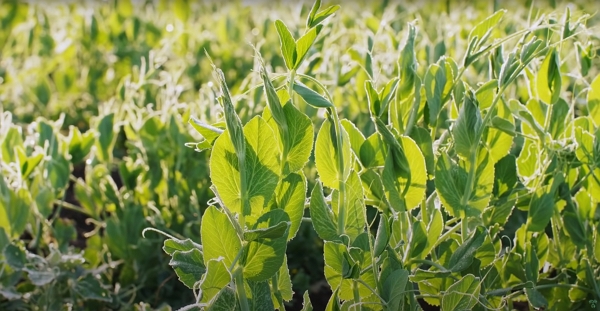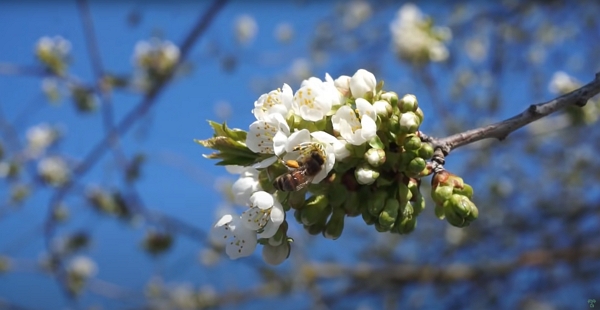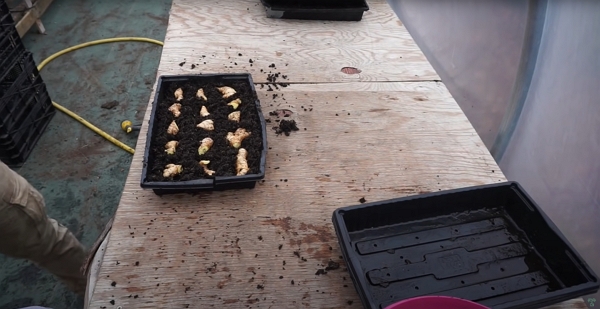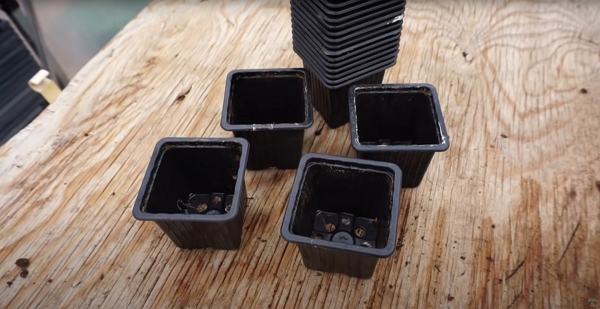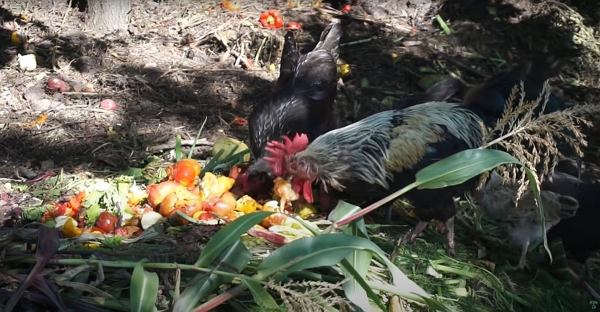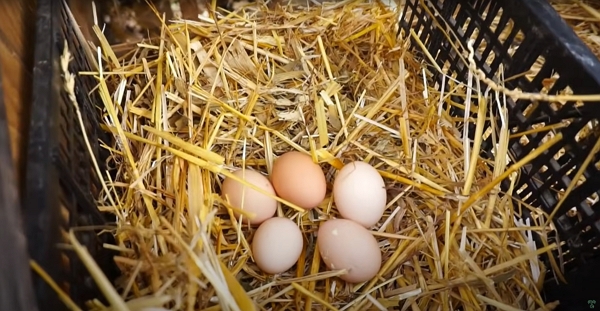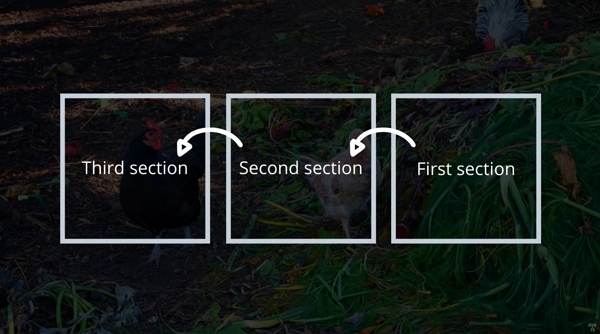Spring is here and a lot is happening in the garden: bees are at work, sowing new crops is the main job and overwinters crops are still producing.
Thanks to Moreno for sharing his wisdom and knowledge! I wrote the following notes watching the video published on The Dutch Farmer’s channel.
You can watch it using this YouTube link.
Overwinter crops
Moreno planted spinach in September and they’re really taking off at this time of the year.
Another crop that could work if it survives the winter is green onions. It’s planted at the same time of spinach.
Also, winter carrots are ready for harvest and, in market gardening, it’s a great thing to have organically grown carrots in March.
What can we plant now, in March
Aspargus and strawberries
They’re crops that you can plant now.
Moreno is planting them between a fence of garlic: the strawberries between every 2 garlic and the asparagus in the middle of the row, as shown below.
Personal note
What I have found about the Alium family is that it’s a great repellant for slugs.
I planted my strawberries in the fall of this year, at the same time as the garlic protecting them.
Peas
They can withstand up to -6 °C so they’re a great crop to plant now.
It’s a crop on the low end of the profitability scale. However, it can offer diversity to the farmer’s customer.
To create the peas’ fence, Moreno uses:
- wooden poles spaced by 1.8 m
- a simple net with a large-sized mesh
Then he applies the same amount of compost (2–3 cm thick) in a narrow row and sows the seeds about 3–4 cm apart.
Peas grow vertically: this is a very good thing when you have limited garden space.
Because of that we easily add lettuces, arugulas, beets or carrots at the base of the peas. In fact, the crops won’t compete for sunlight and you will get more out of the small area.
Overstory trees
Trees are a vital participant in a farmer’s garden.
How is that?
They consume the carbon dioxide of the air through the photosynthesis and transform it into a carbon that will feed the soil and its life. They attract a wide variety of fungi and bacteria. They in turn feed on the elements given by the tree.
In return, they give away nutrients that the soil life will consume. Finally, the soil life produces the food for the crops that produce our food.
Tree and their root system can hold 10 times more water than soil with no organic matter. It’s really something to take care of because water is a really precious resource.
Working with the soil lifecycle, introducing perennial plants and trees is a key way to make sure we can survive on the Earth and take care of it.
Another factor in favor of this is the diversity it brings to the garden. Compared to a single crop field, grown on bare soil, do we see the difference?
Personal note
How do I plan for a sustainable garden?
I have added about 10 cm to 15 cm of autumn leaves on all the beds in November and December.
Yesterday, while planting the potatoes under that blanket of leaves, I could see the moisture about 5 cm down. That is really nice when you know we had a month of January that is the the driest in a long time (no rain in more than 30 days).
In early 2023, we’re already seen warning of a serious drought. Covering the beds adds resilience to the soil.
Maybe we may grow more on highly industrialized farms, what about the quality and the sustainability of such methods?
Aren’t respectful gardening techniques more profitable in the long term even if yields are lower?
==Thinking about it before buying your next carrots from your supermarket or the tomatoes that shouldn’t be available at this time.==
See the detailed explanation and point of view from Moreno at 8:10 to 11:00
Experimentations
It allows creative thinking is a key to success.
Moreno is trying out turmeric and ginger!
Personal note
I’ve been wanting to try this also! Let’s see how Moreno goes about it.
First, start small when experimenting.
Then,
- buy clean and mold-free rhizomes from a local organic shop
- cut them in 4 cm to 5 cm long pieces
- let the piece to heal from the cut for 2 to 3 days.
- soak the pieces in water to speed up the germination.
- plant pieces of turmeric or ginger in compost.
The germination can take a few weeks up to a few months.
It’s important to keep those tropical plants at 20 °C minimum so they can grow.
Indoor is usually a good place to start growing them.
Once the leaves start to appear, you will be able to move them outside under cover.
Seeding
How does Moreno go about seeding in trays?
He uses the 2 cm wide trays as shown above the lettuces.
For other crops requiring more root space, he uses the regular sized pots as shown below.
Prepare the potting mix
Water it so it’s moist but not wet. See Moreno showing the squeeze technique from minute 16:31.
Filling the tray
Make to double-check the filling of the side and corner hole.
Once filled, lift and drop from a 25 cm height the tray to compact slightly the medium.
Complete the filling of the holes where necessary.
Seeding the seeds
Use your fingers or a little pointy tool to create a small depression on the compost mix.
The depth depends on the crops, but usually, for lettuce, 1 cm or 2 cm will suffice.
Then, sow individually the seeds, add another layer of compost mix to cover the seeds and water a little again.
Label it and date it
Personal note
I use a GLORIA Hobby 100 Pressure Sprayer.
It’s quite handy as you can adjust the spray finely. Also, it’s sturdier than a bigger version sprayer (not the same brand) of 5 liters capacity. It broke twice after a year :( So I recommend a 1 liter like this Gloria model.
Composting
Laying the fresh compost directly on the beds in France isn’t a good idea because it can become a perfect slug habitat.
So, instead, if you can have chicken, feed them with your compost.
It will provide fertilizing matter and eggs.
Moreno uses a 3-section compost pile to use the chicken’s work to enrich the compost and produce an aerobic compost.
- He sets the fresher material in section 1 and let the chicken work.
- Then he moves the pile to the section 2 when the pile shows advanced decomposition
- In the section 2, the chicken will continue their job and the bacteria and fungi will multiply
- Finally, he moves to the section 3 to let the compost finish.
It’s a great to go from:
- waste to crop production
- waste to egg production
Personal note
You can make all your own compost yourself? Yes, but it will require time and a lot of energy.
The compost need of garden is pretty important and even if you’re quite fit, don’t you need to keep some energy for more important tasks when you could get cheap compost locally?
Look at the place around, ask small businesses selling plants and trees. They may know where to find good compost.
Moreno buys his high-quality compost at 10 euros a cubic meter. To produce himself a cube meter of finished compost, it would require 12 hours of work [3 turning of 4h for a pile of 5 cube meters at the start].
Even at a 15 euros per hour labor cost, you can see that the sustainability of producing compost yourself is simply not profitable.
Companies specialize in producing good compost. Perform a cost analysis before diving into making your own compost.
You may be surprised.
However, you should make some of your own compost. Simply find the best balance between making it and buying it.
